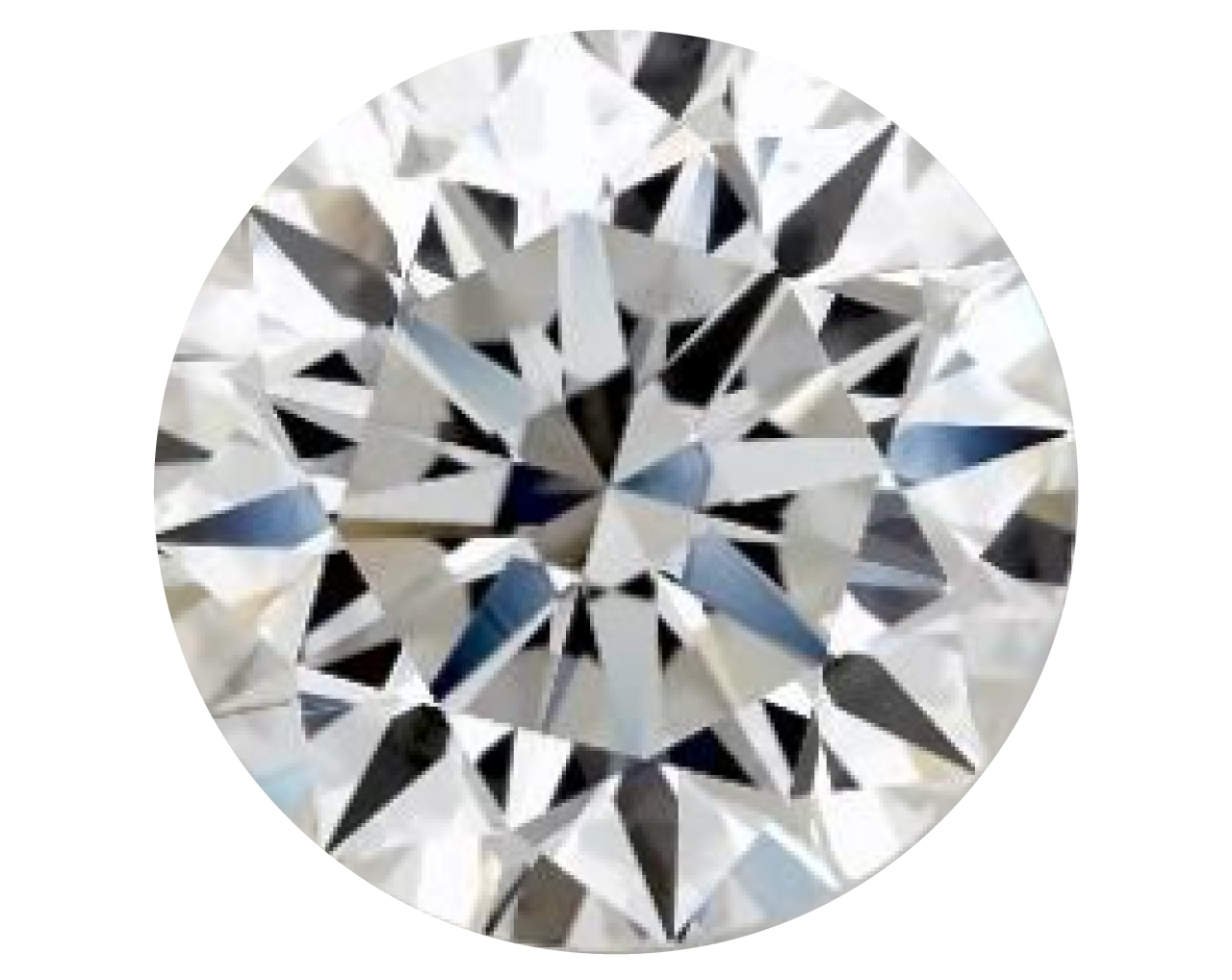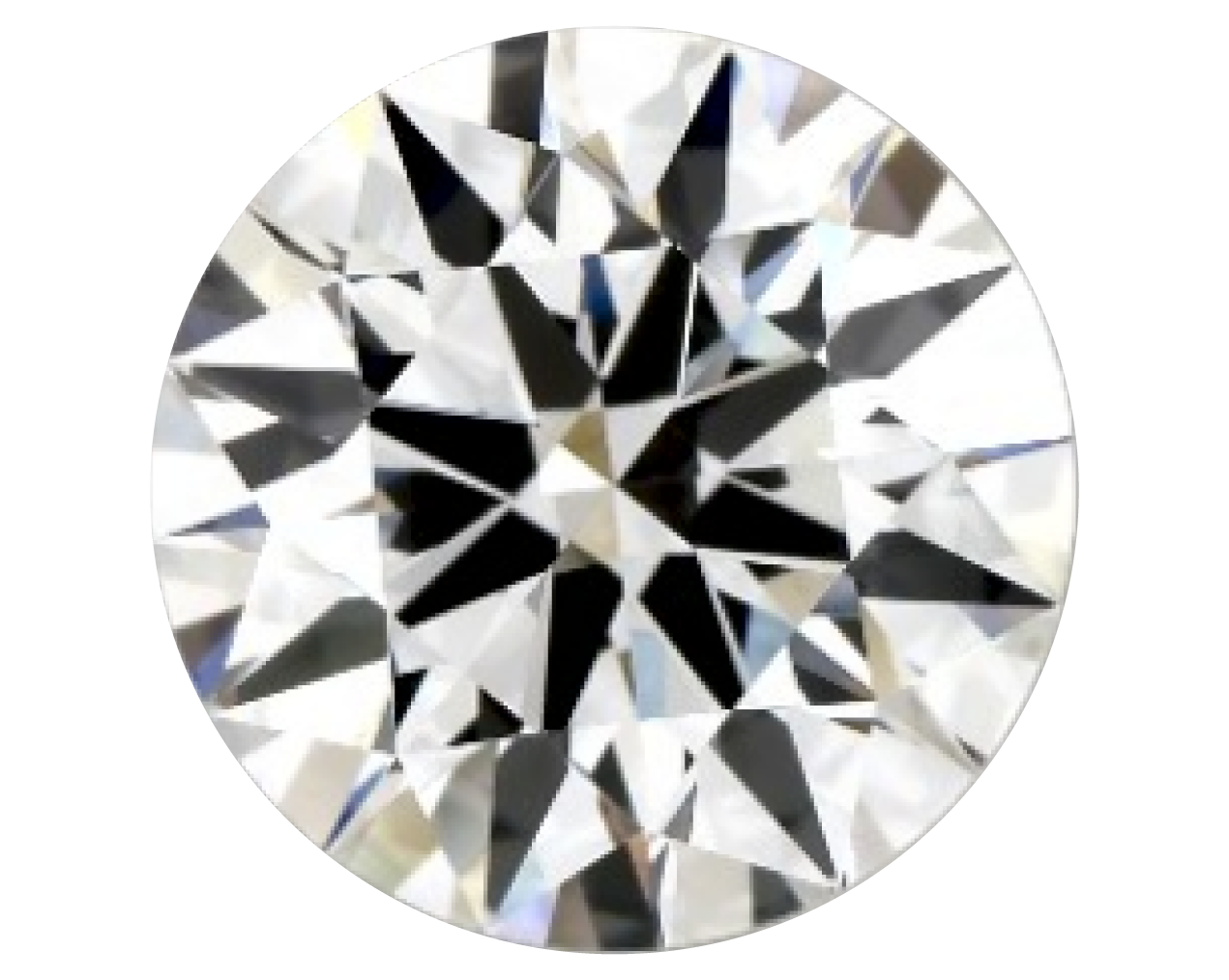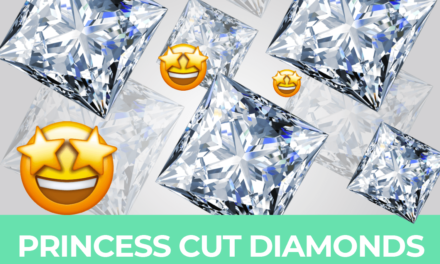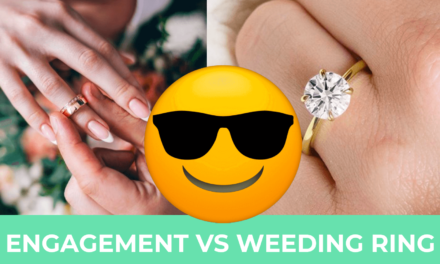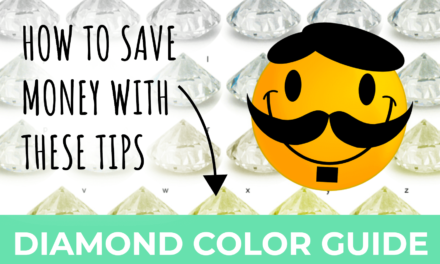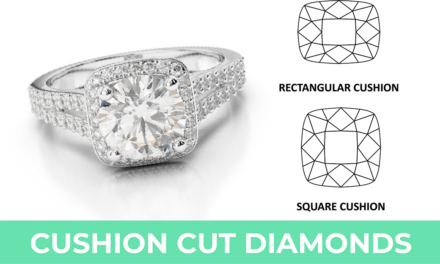SI Diamond – Know This Before Buying One
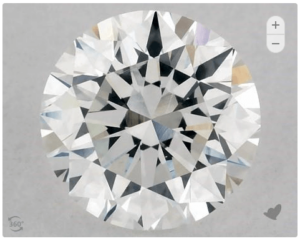
SI diamond, SI1 clarity grade, 1.03 carats, color G
When you are buying an engagement ring, you need to decide what level of clarity to get in the diamond. Many people don’t know much about diamond clarity, and it can be confusing to figure out what all of the different levels mean.
This blog post will explain what SI clarity diamonds are and why they are a popular choice for engagement rings. We will also discuss the benefits of choosing an SI clarity diamond over other, higher clarity diamonds. By the end of this post, you will better understand what these diamonds are and why they make a great choice for an engagement ring.
Content overview
SI Diamond Summary
- SI stands for slightly included indicating that the diamond will have some inclusions or blemishes that may or may not be visible to the naked eye
- There are two SI clarity grades, one is SI1, and one is SI2, with SI2 being the lower clarity grade
- SI diamonds represent a relatively low clarity grade, which is why those diamonds are often discounted and a good option for people on a budget
- It is possible to find eye-clean SI diamonds if you spend a little bit of time doing research and scanning through HD videos and pictures of diamonds
- The best places to shop for SI diamonds are James Allen and Blue Nile
What Is SI Diamond Clarity?
About half of all round-cut diamonds available on the market today have a clarity grade of slightly included (SI) or included (I). As the name of the diamond grade implies, SI diamonds have inclusions and blemishes. However, most of those you can only see under magnification.
Using a 10x magnifying loupe, you can easily spot the inclusions in SI clarity diamonds, even though they typically look flawless when seen by the naked eye. That is why SI1 graded diamonds are in such demand for shoppers on a budget. People can get a high-quality diamond and save money at the same time.
However, in some stones, inclusions can also be seen by the naked eye. That is especially true for larger diamonds or if the inclusions are in the center with no facets to conceal them.
It is essential to know that two GIA-graded (gemological institute of America) SI diamonds can look very different when comparing them side by side.
Some loose SI clarity diamonds will appear completely eye-clean, while others have inclusions that you can spot instantly. The flaws’ location, color, and size determine how easily you can see them when the stone is face up.
There is no way you can tell from the grading report if a diamond is or is not eye-clean. You would need to view HD videos and images of the diamond, which you can get when shopping online at certain vendors.
Take a look at the two diamonds below. One is an eye-clean SI-graded diamond; the other is not. Can you spot which one it is?
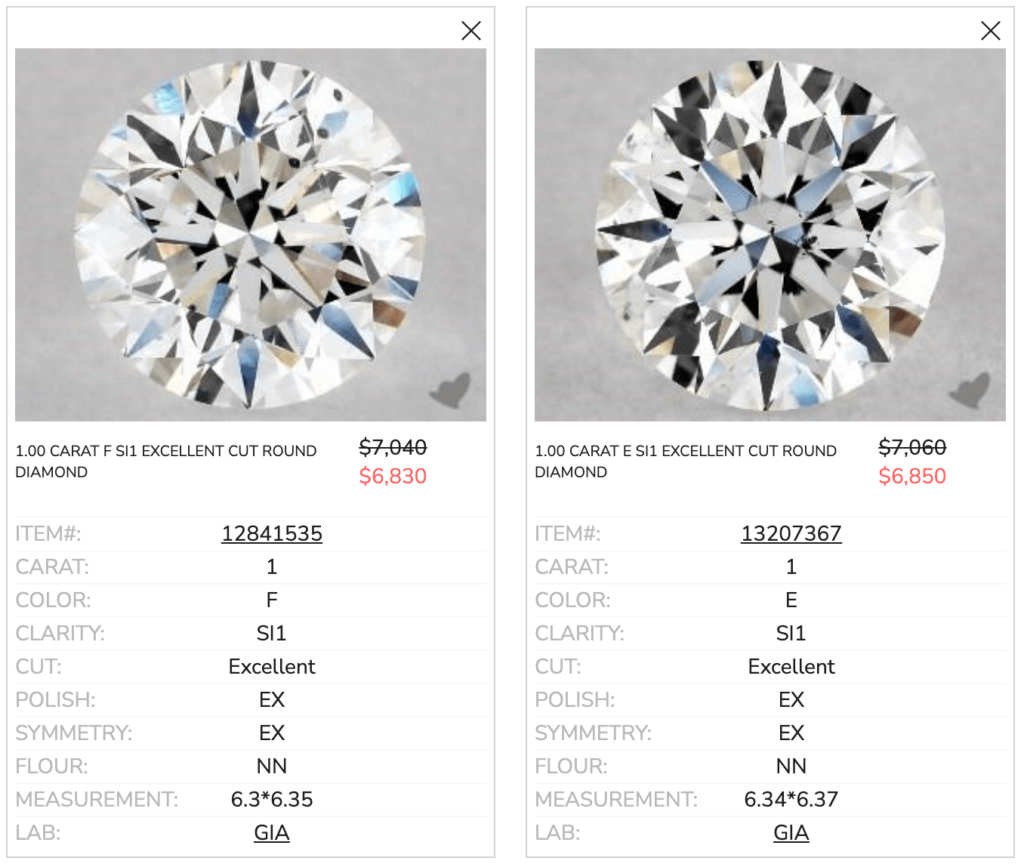
Currently, only two vendors, James Allen and Blue Nile offer this super zoom function that allows you to look for eye-clean diamonds. We’ll discuss this in more detail further on in the blog.
The GIA Diamond Clarity Grade Scale
The below grading scale shows the various clarity grades ranging from FL over VS1 and VS2 diamonds to SI diamond grades.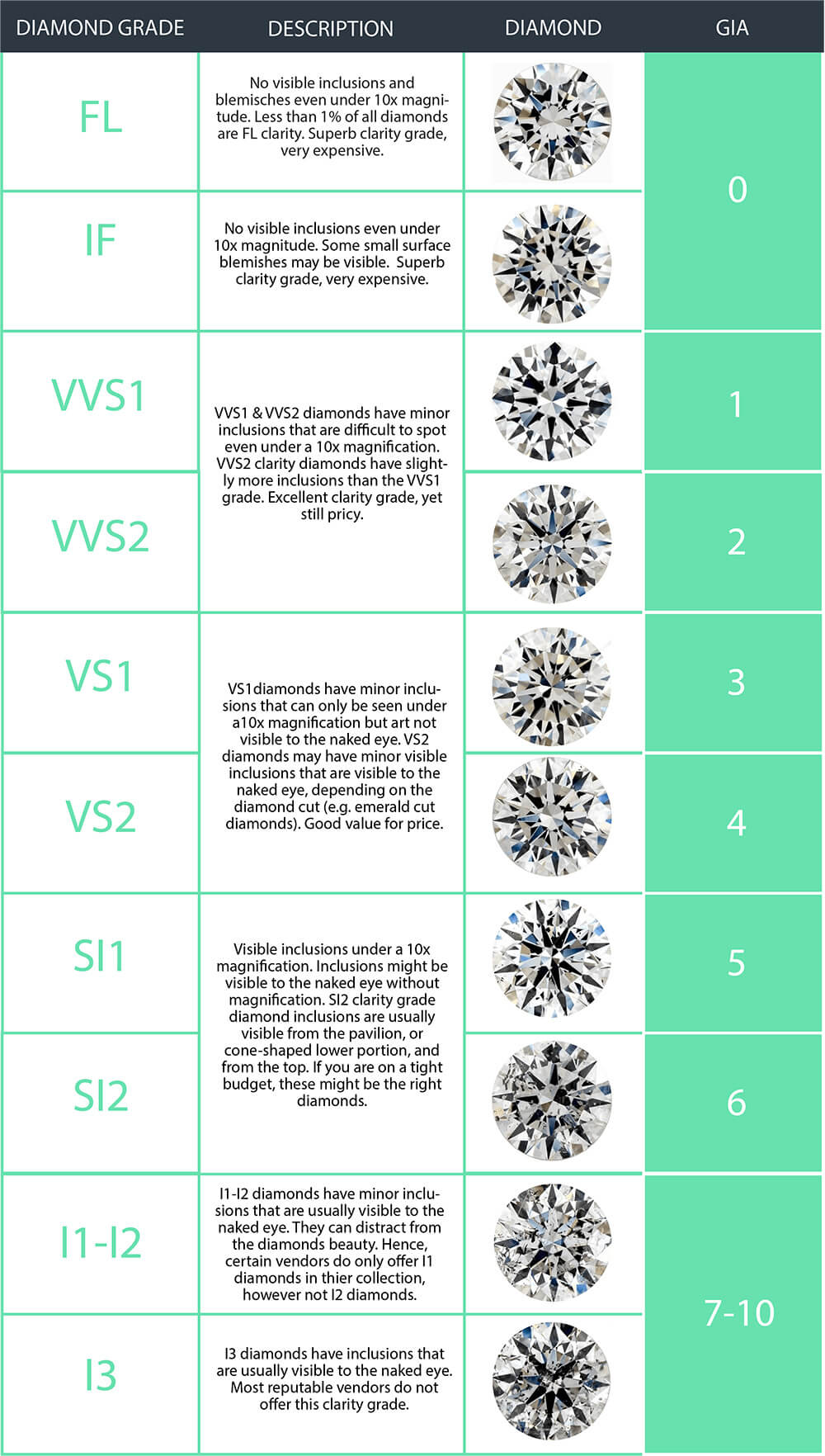
The SI diamond clarity range includes slightly included 1 (SI1) and slightly included 2 (SI2) diamonds.
The number of inclusions in SI-graded diamonds can vary. These are small- to medium-sized inclusions located anywhere in the diamond but are more likely to be in the center. There could be one or several different flaws. But usually, there is a single grade-setting inclusion instead of many small ones.
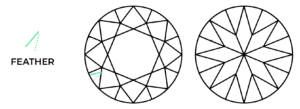
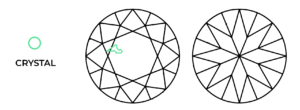
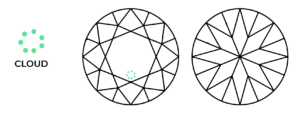
Comparison of SI1 vs. SI2 Diamond Clarity
Both SI diamonds have visible inclusions under a 10x magnification. SI1 diamonds have smaller, fewer visible inclusions and flaws than SI2 diamonds.
The main differences between the two clarity grades are the type of inclusions and the amount. The inclusions in SI diamonds can be of varying sizes. You can typically find them in the center or on the sides along the girdle.
The type of inclusions you’ll typically find in those diamonds are dark crystals or white crystals, cavities, chips, clouds, feathers, indented naturals, knots, needles, and twinning wisps.
Since SI1 diamonds belong to a higher clarity grade, they are more expensive than SI2 diamonds. They tend to have only small inclusions.
SI2 diamonds, on the other hand, are a lot more affordable. They tend to have more noticeable inclusions. Less than half of the gem-quality diamonds in the world fall within the SI clarity range. You can often get a beautiful eye-clean SI clarity diamond for a reasonable price of 10% to 20% less than you would pay for a VS diamond. This is what’s driving the demand for SI diamonds.
What are SI Diamonds worth?
SI diamonds are significantly more affordable than higher clarity grade diamonds. However, the price of a diamond not only depends on the clarity but also on the color, cut, carat weight, and certification.
A well-cut SI1 1-carat diamond with a color grade of H, for example, costs around $6,000.
In comparison, an SI2 1-carat diamond with the same parameters as above would cost around $4,000.
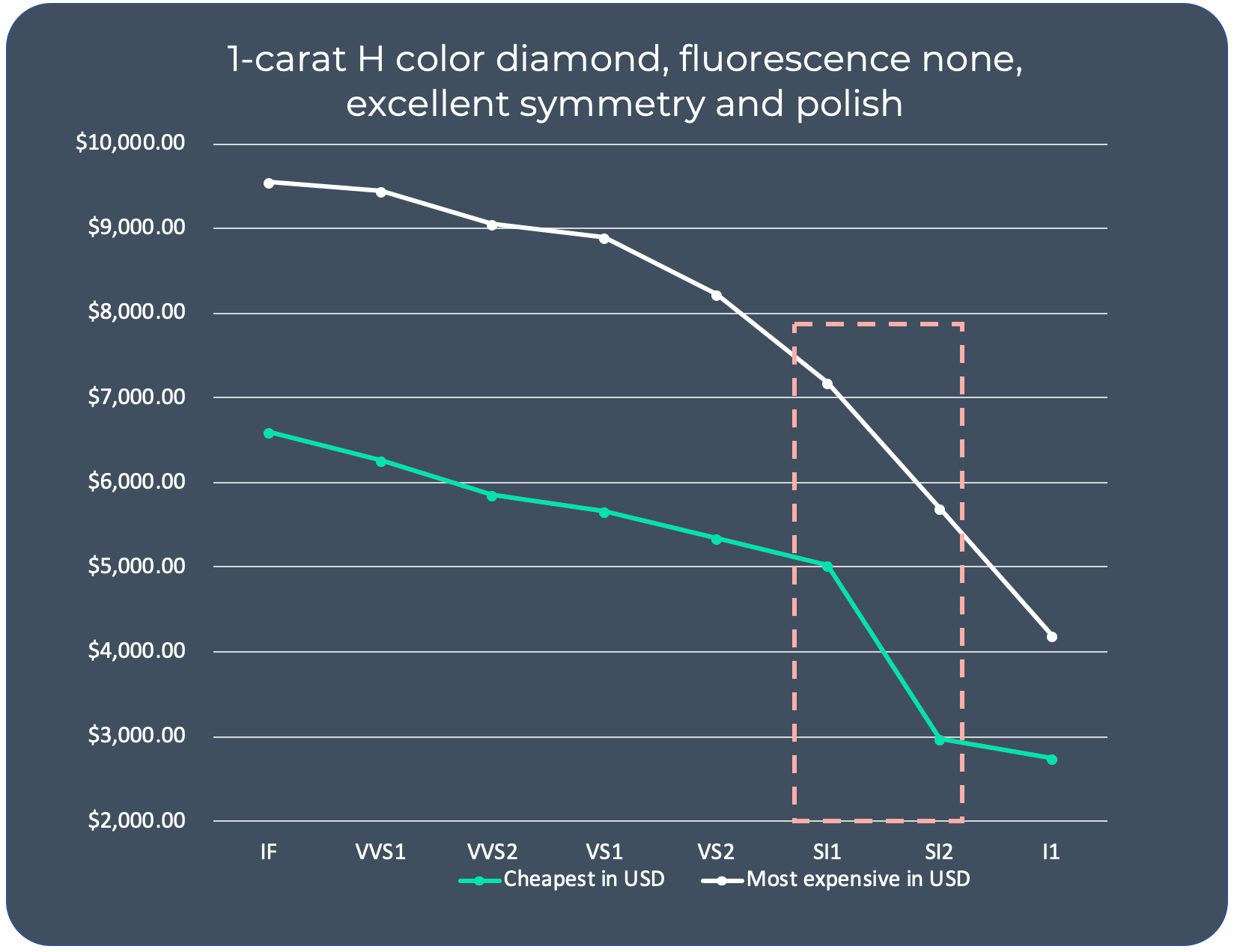
As you can see in the graph above, the price difference between SI1 and SI2 clarity diamonds is quite significant compared to the difference between other clarity grades of diamonds.
Is an SI Diamond Considered a Good Choice for an Engagement Ring?
Yes. An SI clarity diamond may not be flawless, but it will look beautiful and hold its value. It is improbable that anyone would look closely enough to spot any inclusions. That is if you avoid diamonds with apparent inclusions.
The most suitable diamond shapes for this type of diamond are a brilliant round cut diamond below 2 carats.
Like most high-quality diamonds, you can expect both SI diamonds to increase value over time. To safeguard this, I recommend that you only purchase a diamond graded by a reputable institution such as GIA.
To get the best gem possible, you need to see the diamond up close. That way, you can ensure that the diamond is eye-clean. Having close-up pictures will help you buy SI clarity diamonds with confidence. The only two vendors who offer sufficiently large images are James Allen and Blue Nile.
How and Where to Buy a SI1 Clarity Grade Diamonds
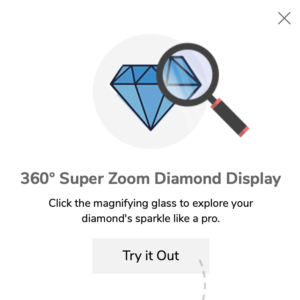 The secret to buying the best-looking SI1 diamonds is to only choose diamonds with widely dispersed inclusions. I would avoid diamonds with inclusions that spread into the body of the stone or that have inclusions near the center. That way, you’ll have a seemingly flawless diamond while at the same time-saving money.
The secret to buying the best-looking SI1 diamonds is to only choose diamonds with widely dispersed inclusions. I would avoid diamonds with inclusions that spread into the body of the stone or that have inclusions near the center. That way, you’ll have a seemingly flawless diamond while at the same time-saving money.
It is important to NEVER buy an SI-graded diamond without seeing it first. If you’re shopping online and the vendor doesn’t have HD videos or images that allow you to inspect the diamond closely.
Just follow the rule: No images or videos, no shopping. The last thing you want is to blindly buy an ugly diamond that will remind you how you squandered your opportunity every day.
If you have your heart set on an SI1 diamond, your best bet would be to rely on James Allen or Blue Nile. James Allen enjoys consumers’ confidence from all walks of life, with widely varying budgets. You will be provided with magnified images and videos of each stone you’re interested in, so you can’t go wrong.
Tip: When viewing the James Allen diamonds, turn down the magnification from 20x to just 2x, as seen below:
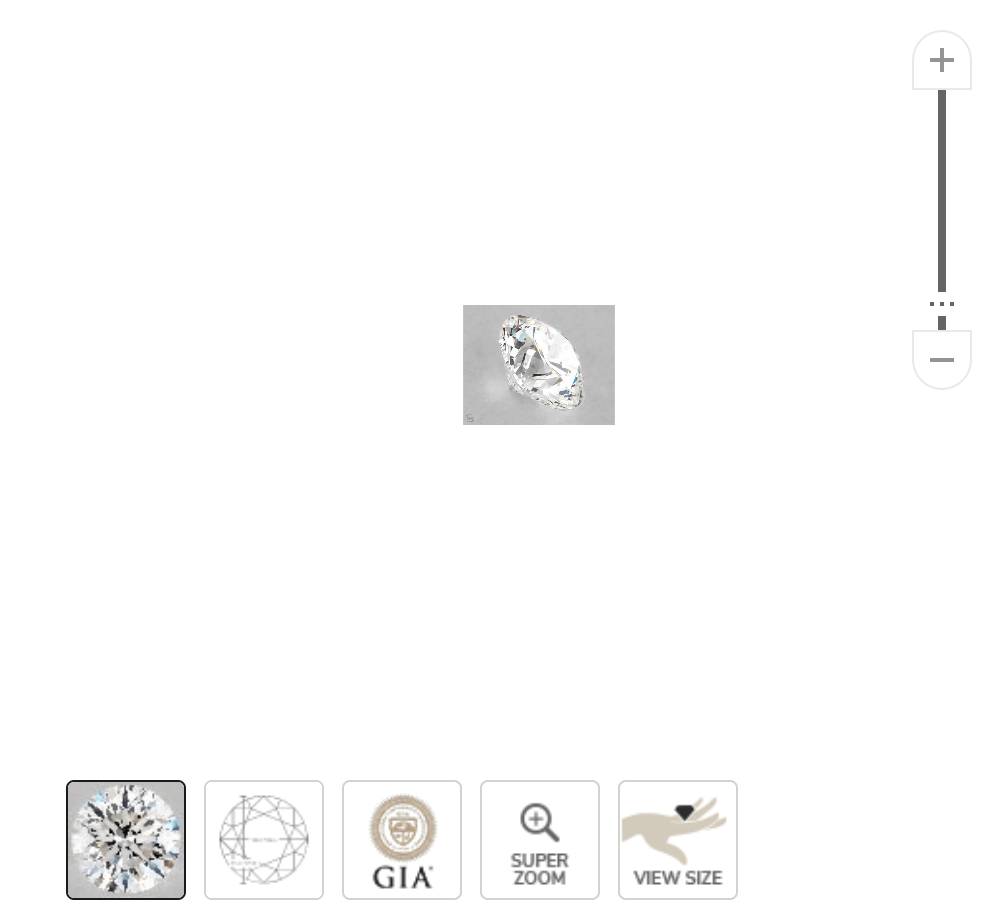
This allows you to see the diamond as it appears in person. While it’s still at 2x magnification, we believe this is an accurate image since you’ll be viewing it through your computer screen. Furthermore, any James Allen diamond that looks eye clean under 2x magnification will likely look eye-clean in person!
Conclusion
Buying a diamond can be quite an adventure. Many people think that they should only purchase one of the highest clarity grades to ensure that they get a beautiful diamond.
In reality, they have to do some research and understand how to find an eye-clean diamond. If you are willing to put in some work up front, you can find a beautiful diamond in the SI clarity range and save a lot of money.
Diamond Quiz
Can you tell the difference?
One of the two diamonds below has a clarity grade of VVS1, the other one of VS1. Can you tell which one has the lower clarity grade and costs $1000 less?
